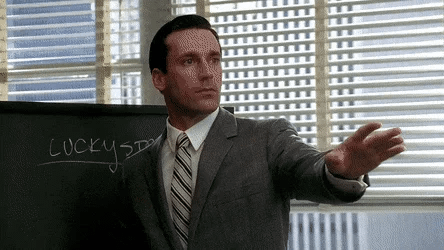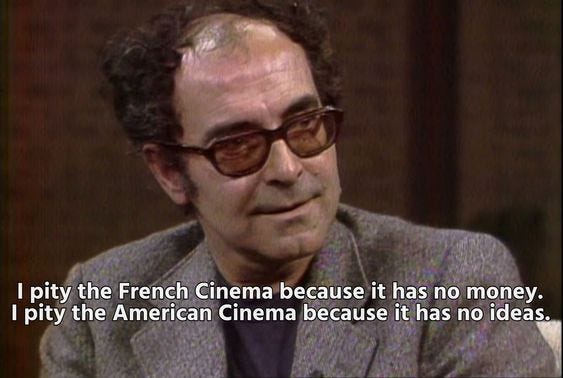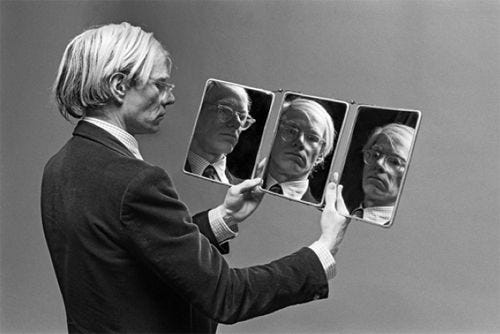Hi Move Fast, Think Slow readers! For those folks who are new here, MF/TS is a weekly newsletter focusing on brand marketing, finding the adjacencies in life + team performance, and other things I care about such as running, stoicism, and pinning good ideas to the board. If you have not yet subscribed, join 100+ smart, curious humans by doing so here.
Recently, I shared my Brooklyn Half-Marathon race recap and finding your weird.
We all spend so much time “fitting in” that we forget to take time to think about who we want to be. And also who we were when we were young and what mattered to us.
WHAT’S POPPING IN MF/TS THIS WEEK
“Never assume.”
That came from my very first boss / first corporate coach when I was reporting back on a task I had to complete. When I said to him, “I had assumed that…,” he interrupted and said “never assume and I mean, never.”
“You have to have strong fundamentals!”
This came from the old ball coaches in Texas when I was in high school. They PREACHED strong fundamentals because you’re more likely to beat the guy you’re lining up against in football if you have proper technique. If you don’t have good technique you decrease your chances of success.
This week, we’re nerding out on the foundational elements of how advertising works. Truth be told SO many people in advertising assume. Also, most don’t eat their Wheaties to understand the fundamentals of what advertising is for. That’s why there is so much bad work out there. A lot of advertising is driven by ego, versus what is objectively true on what really works.
WTF IS ADVERTISING FOR
“If it doesn’t sell, it’s not creative.” - David Ogilvy
David Ogilvy is one of the most famous advertising execs in the history of the trade. The big creative ad agency he started in the 60s still exists today. He was famous because when companies came to him / his agency to do an Advertising campaign, the results of said campaign were tangible business/sales growth.
Basically, Ogilvy helped you / your company get rich.
To Ogilvy, creative advertising ideas were only valuable if they ultimately led to increased sales and were not merely creative for creativity's sake.
In order to make creative that sells, the people who make the creative need to have a clear understanding of what the creative is for. In other words, what is the creative job to generate the best possible outcome for the brand and business? In order to understand that, we’d have to know how advertising works.
THE WISDOM OF PAUL FELDWICK
Paul Feldwick is an advertising legend who has wrote multiple books. One of which is THE ANATOMY OF HUMBUG, a book on the history and fundamental theories of advertising proven true since the beginning of the trade 100+ years ago.
And by proving as much, he thinks people can see today’s marketing challenges in a clearer light in the spirit of putting forward the best strategies, ideas, and partnerships.
“Do recent changes in communications support a narrative that renders the previous history of advertising irrelevant? I want to argue that the opposite is true, that we will only be able to respond adequetly to the continuing rapid pace of change in commerce and communications if we understand the basic princples of how people are influenced by publicity.”
On how organizations can leverage the insights shared in his book.
“Any organization can get better at this as long as they are prepared to keep an open conversation about it. Rather than digging your heels in and saying it has to be like this or it has to be like that. If you actually listen to each other and if you are prepared to explore possiblities, without being too attached to any simplistic idea on the way it works then you will be able to get better results.”
When I ask people who work in advertising, who call this their trade, if they have heard or read this book, the answer is always no. LOL!
Let’s dive in…
SIX WAYS TO UNDERSTAND HOW ADVERTISING WORKS
To Feldwick, there are six ways to “understand” how ads work.
Advertising as Salesmanship - the good old fashion value prop
Advertising as Seduction - non-verbal cues that signal status/allure
Advertising as Salience - be familiar and known by people
Advertising as Social Connection
Advertising as Spin
Advertising as Showbiz
Below are summaries of each way to understand with tidbits from Paul’s book.
1. ADVERTISING AS SALESMANSHIP
The good old-fashion Unique Selling Proposition was coined by Rosser Reeves. Reeves said “the consumer tends to remember just one thing from an advertisement - one strong claim or one strong concept.”
Another legendary advertiser said “advertising is salesmanship in print.”
This is the school of rational, conscious persuasion and the transmission of direct messages. Think print ads, direct mail, or email marketing.
Much of the language we use to this day, the proposition, the message, the reason why, impact, attention, awareness, recall, can all be traced back to the earliest days of advertisements.
2. ADVERTISING AS SEDUCTION
“Seduction” emphasizes the power of non-verbal, unconscious communication and the importance of emotions in decision-making. In other words, the aesthetics and vibes a company puts out into the world.
Research has shown that all decision-making is related to emotions and feelings. There is no such thing as a pure rational decision. We instantly and subconsciously make links between images and ideas, images and emotions, and the patterns of these are continually influencing the choices we make.
This is the opposite school of rational, direct messaging as advertising.
“Ads may be more powerful precisely because people pay them so little heed that they do not call critical defences into play.” - Michael Shudson | SOURCE
“There is evidence that people are more likely to be influenced by empty persuasive messages, such as commercials, when they are tired and depleted.” - Daniel Kahnman SOURCE
3. ADVERTISING AS SALIENCE
“The role of advertising is not so much to increase sales, as to increase saleability.” - Stephen King (the Ad man, not the famous horror author).
A big reason advertising can work is that it keeps your company’s name in the public.
Robert Cialdini said, “For the most part, we like things that are familiar to us”, the so called ‘availabilty heuristic’, written by Daniel Kahneman says that the things we think of first or can picture most vividly are assumed to be most common and important.
This is also known as “social proof,” where people are reassured not just by their own familiarity with a brand name but also by the assumption that many others also use it.
This is one big reason why Super Bowl advertising is still a big deal. And why sports advertising continues to rise. Where else can brands show up to be seen by as many people at once. Yes, it’s about reaching a lot of people at once but it’s also about subliminally knowing other people saw the ad as well.
“If a luxury car only ever advertised to people in the market for a luxury car in the next 6 months then soon, nobody would be in the market for that car, as you mainly buy one to be the envy of the people who can’t afford it.” - Jeremy Bullmore | Source
To build on this idea, what is the best way to effectively be more “saleable” or more “familiar?” The best way is for a company to produce work that becomes famous. Fame generates popularity and popularity has an association of high value status. There’s a lot of research that shows fame = high value for brands. That type of social proof gets people to want to buy your products. See the entire luxury fashion category and their use of familiar celebrity faces and exotic location settings. More on this in the next dispatch.
SUMMARY
Here’s the thing. There are international research reports / decades of data that support Paul’s assertions of how advertising works. Next week we’ll dive into the other three (Social connection, Spin, and Show biz) as that’s enough for you to marinate on. I’ll also dive into why it’s very hard to come up with genius creative with corporate committees.
IMAGES OF THE WEEK
Go forth.
Stay safe.
Ride the wave.
-Mitch











